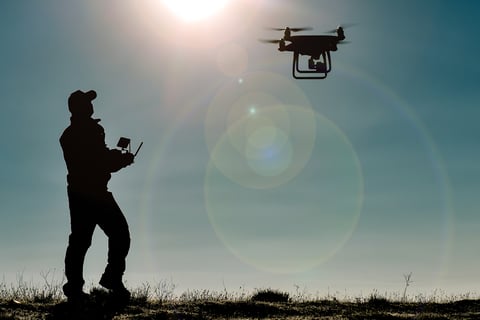
Humans have been mining for thousands of years. Literally, thousands of years. Gold, chalk, silver, ore—we have been dependent on valuable minerals for longer than we can remember. But today’s mines look nothing like those of ancient Egypt—or even those of 50 years ago—thanks to steady improvements in technology. With each advancement, the mining process has improved, becoming safer, more efficient, and more cost-effective than before.
If the past is any indication, the industry will only continue to innovate new and better ways to mine materials. Today’s trends lead to tomorrow’s breakthroughs, so let’s take a look at what might be in store.
1. Drones
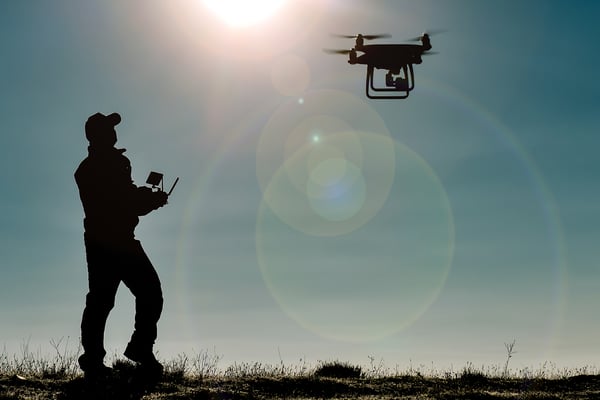 Drone flight test and training. Photo courtesy of iStock/Huseyin Bostanci
Drone flight test and training. Photo courtesy of iStock/Huseyin Bostanci
Underground drones are being used as mine scouts, flying through mines to search caves, collect data, and aid in the mapping process. They’ve proved extremely effective at recording gas levels, identifying geological features, and recording high-quality visuals of the caves, eliminating the need to send human surveyors. By sending drones into unfamiliar areas first, workers are kept safe from possible hazards. In an underground setting after excavation, there are multiple risks like potential collapse, inaccessible areas, and no light.
The technology has only been around since 2017, but the possibility of understanding a mine’s conditions without putting miners or surveyors at risk will be hard to resist.
2. Virtual Reality
 An engineer using a VR simulator for building visualization while his colleague explains the project to him. Photo courtesy of iStock/SeventyFour
An engineer using a VR simulator for building visualization while his colleague explains the project to him. Photo courtesy of iStock/SeventyFour
Picture this: it’s your first day at a new job. You’ve sat through weeks of training, reading about procedures, safety protocol, and worker’s comp. You’ve studied everything and paid attention: you’re ready. Then, someone hands you an explosive.
Are you really ready?
With virtual reality technology, miners can be trained in the delicate art of explosives without putting themselves at risk. Using a simulated mine, trainees can practice placing, setting, and detonating explosives in a safe environment. Any mistakes they make are highlighted and revisited as a learning opportunity without causing any damage to people or mines.
3. Autonomous Vehicles
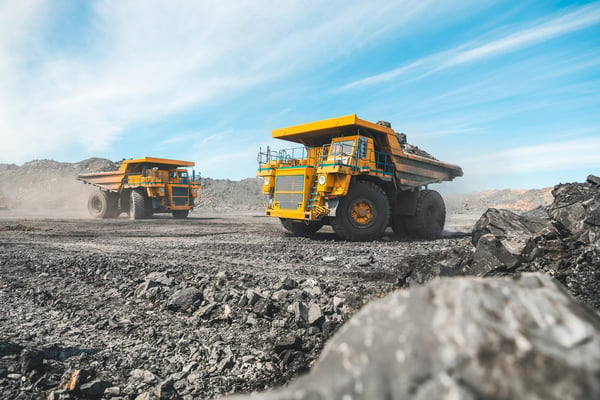 Large quarry dump truck transporting coal from a mining site. Photo courtesy of iStock/qwerty01
Large quarry dump truck transporting coal from a mining site. Photo courtesy of iStock/qwerty01
Self-driving vehicles are certainly on-trend in 2020. Truck, rail, air—every industry seems to be making strides in that direction, and the mining industry is no exception.
Autonomous trucks have had a presence in the mines for the past few years, with Cat, Komatsu, and Hitachi all offering automated systems to their clients. The next step takes automation even further. “Intelligent mines” are mines that are staffed with driverless trains, trucks, and other robotic assistants like “Julius,” the shopping-cart-sized robot capable of analyzing ore samples. These technological advancements are reducing the number of human workers needed, with BDO Global going so far as to estimate they could replace 50 percent of miners in the next several years.
As hard as it might be to imagine, miner-less mines are likely a part of the future.
4. Digitalization and Mining Software
 IT programmer working in a data center system control room. Photo courtesy of iStock/gorodenkoff
IT programmer working in a data center system control room. Photo courtesy of iStock/gorodenkoff
The more automated a mine is, the easier it is to collect data. That data includes everything from mine conditions to inventory to fleet maintenance needs. As more and more mines add automated machines to their process, more data will be collected, leading to improved analysis, operating efficiency, and safety.
The majority of the mining software available compiles and sorts data, storing it for easy access even remotely. With software like that in place, equipment operators and management can track how much material is used and if it is in need of repairs to avoid costly downtimes. Even in the exploration phase mining software is crucial. Environmental data is stored to be reviewed by geologists and stakeholders to make decisions about a potential mine site.
5. Blasting Optimization
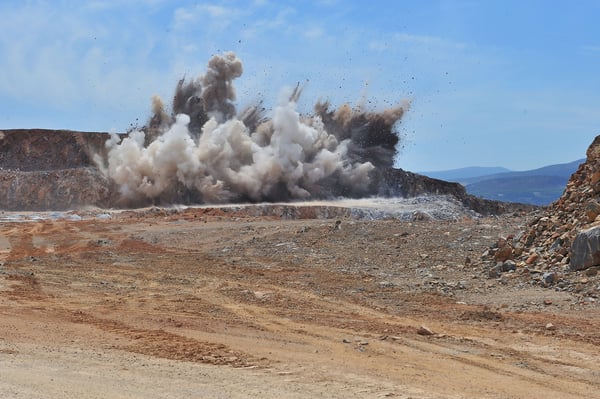 Limestone blasting at a mining site. Photo courtesy of iStock/Picsguru
Limestone blasting at a mining site. Photo courtesy of iStock/Picsguru
So much has changed in the mining industry, but miners still rely heavily on explosives. To ensure a successful blast and streamline the design process, a variety of companies are relying on technology. Using projected fragmentation models, ore tracking systems, and environmental data, companies can provide blasting plans that ensure results. Drilling logs, visual inspection, and laser profiling data all are part of the decisions made for blasting. The blast site is analyzed in several ways: sediment density, fluid penetration, mud seams, and fragmentation.
In addition, mining is a hazardous occupation, in large part due to the dangers of breaking rock apart. Blasting is a complex activity that requires a specially-trained crew. Employees not associated with the blast must leave the area.
Blast sites are not fully automated, but we should expect things to move in that direction. Electronic detonators are already in use, with every year bringing improved performance and blast safety. However, due to the complexity of the task, wiring is still done by explosive experts. The long-term goal of many in the mining industry is to create a completely wireless system, allowing for full automation that requires only human oversight.
6. Electric Vehicles
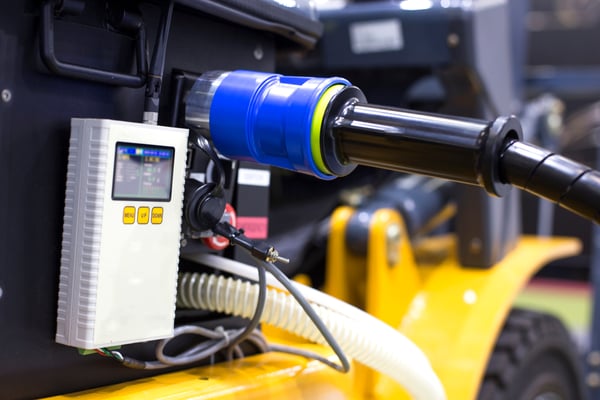 Recharging an electric forklift. Photo courtesy of iStock/bong hyunjung
Recharging an electric forklift. Photo courtesy of iStock/bong hyunjung
Moving to an all-electric underground fleet will be a slow process, but it’s certainly in the works. The initial expense is high, prompting companies to think twice before purchasing, but electric vehicles provide a fairly quick return on the investment. Why? Operating expenses are low, and they’ve been proven to be more efficient than traditional fleets. Even better? Emissions are virtually non-existent, making electric vehicles a tempting choice for a world that’s growing ever more concerned about pollutants. Some of the vehicles you’ll find in these electric fleets are boom trucks, LHDs, and mobile rock breakers.
7. 3D Printing
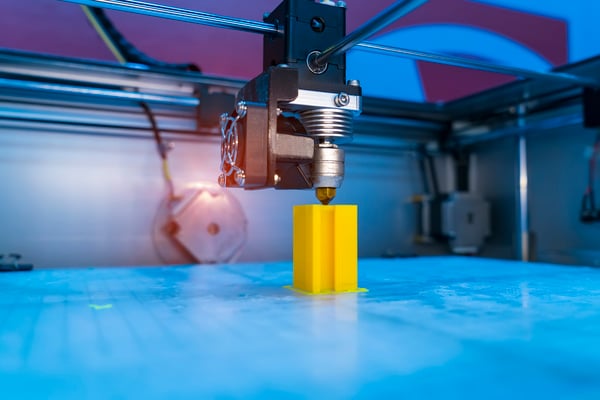 An object is printed by a 3D printer. Photo courtesy of iStock/kynny
An object is printed by a 3D printer. Photo courtesy of iStock/kynny
An Australian mining company has been exploring the possibility of using a 3D printer to print replacement parts, utilizing fine metal powders. The printer is potentially capable of creating a ton of parts per day. Fortescue Metals Group is collaborating with printing experts on designing this machine with the hope of avoiding the need to stockpile parts or wait 12 to 18 months for replacement parts to be manufactured. Their main focus is on the parts in their processing plants that need to be replaced or are obsolete. By creating these parts on demand they’ll be able to avoid costly downtime and decrease the inventory of replacement parts on-site. They also like the freedom to redesign parts that aren’t working to their satisfaction.
Their results are promising, but the project is still in its infancy.
At Dixon, our customers never have to wait for excellent service. We strive to provide fast shipping when our customers need replacement parts to reduce downtime and get their equipment up and running. As for part modifications? Our expert team of engineers is always delighted to work with clients to customize products to fit their specific needs.
Improved Technology, Improved Safety
Why is the mining industry never satisfied? Why do we keep seeking new ways to accomplish an ancient task? It’s simple: every technological advancement could mean a life saved.
Despite how far we’ve come, mining can still be dangerous work. Accidents and fatalities occur every year, and no one in the industry is willing to continue to accept that as the status quo. Every additional piece of data gathered makes the process safer; every driverless vehicle keeps a human out of a potentially dangerous situation; each scouting improvement alerts operators to an avoidable hazard.
The world needs miners as much as ever, but we need them to be safe and secure throughout the process, and technology is part of making that happen.
At Dixon, we take this reality very seriously. It’s our goal to create reliable, durable products capable of withstanding even the harshest mining conditions. With innovation on our side, we have every confidence that the future of mining will be smarter and safer than ever before.
Looking for a solution with a specific mining challenge? Contact us through our website to get started.
Sources:
- https://www.mining-technology.com/future-of-mining/productivity-benefits-of-electric-vehicles-for-underground-mines
- https://mine.nridigital.com/mine_australia_mar19/underground_drones_how_hovermap_is_using_autonomous_technology_to_explore_mines
- https://vrvisiongroup.com/how-virtual-augmented-reality-are-revolutionizing-the-mining-industry/
- https://mine.nridigital.com/mine_australia_mar19/a_project_to_save_time_and_energy_with_3d_printed_mining_parts
- https://blog.robotiq.com/discussing-the-future-of-mining-robots-with-prof.-jung
- https://www.mining-technology.com/future-of-mining/digitalisation-in-mines-the-future-of-connectivity-in-the-mining-industry
- https://www.ey.com/en_gl/mining-metals/10-business-risks-facing-mining-and-metals?_sm_au_=iVV267f7Hv3H25Vj4RH6jKQRRt7vG
- https://www.dynonobel.com/~/media/Files/Dyno/ResourceHub/Media%20Articles/Enabling%20better%20blasting%20-%20Mining%20Magazine.pdf
- https://www.bdo.global/getmedia/34a01421-6dfc-4e0b-a162-ee6c4e8ba7b8/BDO_2023_Mining-Predictions.pdf.aspx
- https://www.sciencedirect.com/science/article/pii/S2095268618306578
- https://www.miningglobal.com/technology/how-optimize-drilling-and-blast-effectiveness
- https://3dprintingindustry.com/news/aurora-labs-partners-with-fortescue-metals-group-to-explore-3d-printing-in-the-mining-industry-142110/
- https://www.cdc.gov/NIOSH/Mining/UserFiles/works/pdfs/bismef.pdf


